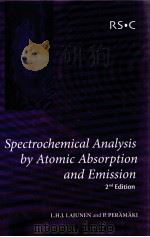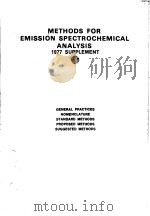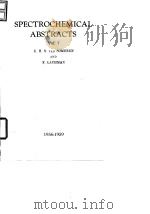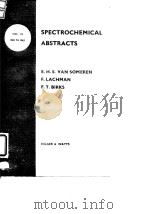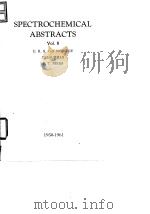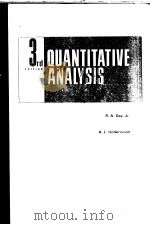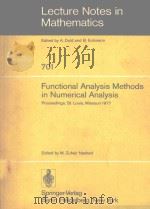《SPECTROCHEMICAL ANALYSIS》
| 作者 | 编者 |
|---|---|
| 出版 | 未查询到或未知 |
| 参考页数 | 267 |
| 出版时间 | 没有确切时间的资料 目录预览 |
| ISBN号 | 无 — 求助条款 |
| PDF编号 | 811318568(仅供预览,未存储实际文件) |
| 求助格式 | 扫描PDF(若分多册发行,每次仅能受理1册) |
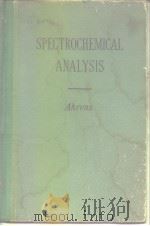
PART Ⅰ.GENERAL PRINCIPLES1
CHAPTER 1.INTRODUCTORY REMARKS1
CHAPTER 2.THE ORIGIN AND INTERPRETATION OF SPECTRA6
2-1Introduction6
2-2 Atomic structure and quantum theory6
2-3 Quantum numbers8
2-4 Multiplicity9
2-5 Energy levels(states)of an atom11
2-6 Some selection rules11
2-7 Graphical representation of energy levels or terms:EKcitation potentials12
2-8 Obtaining term symbols and excitation data from the literature13
2-9 Collisions of the second kind:The metastable state14
2-10 Ionization potentials15
2-11 Hyperfine structure of spectral lines15
2-12 Relative intensities of lines in a multiplet16
CHAPTER 3.SOME PHYSICAL FEATURES OF THE D.C.ARC DISCHARGE17
3-1Excitation in the arc17
3-2 Arc temperature and ionization potential19
3-3 Degree of ionization and temperature23
3-4 Cathode layer enrichment23
3-5 Relative intensities of lines and temperature24
3-6 Measurement of arc temperature27
3-7 Natural shape and width of a line28
3-8 Self-absorption and self-reversal29
CHAPTER 4.POWER FOR THE ARC SOURCE33
4-1General33
4-2 Current control34
4-3 Multisource units36
4-4 Intermittent(pulsating or interrupted)arcs36
CHAPTER 5.QUALITATIVE ANALYSIS37
5-1Sampling and preparation of specimen37
5-2 Further preparation of specimen prior to arcing40
5-3 Electrode impurities and electrode purification43
5-4 Electrode shapes and sizes48
5-5 Less conventional methods of introducing the elements into the arc column51
5-6 Cathode layer excitation53
5-7 The most sensitive lines of the elements57
5-8 Methods of identifying elements61
5-9 Slit illumination for qualitative analysis64
5-10 Color of the arc image64
5-11 Visual(spectroscopic)analysis67
CHAPTER 6.SELECTIVE VOLATILIZATION68
6-1General68
6-2 Boiling points and selective volatilization69
6-3 Elimination of selective volatilization72
6-4 Some advantages of selective volatilization74
CHAPTER 7.GENERAL PRINCIPLES OF QUANTITATIVE ANALYSIS76
7-1Introduction76
7-2 Sample preparation and loading of electrodes76
7-3 A fundamental assumption in quantitative spectrochemical analysis78
Internal Standards78
7-4General78
7-5 Choosing an internal standard81
7-6 Purity of specimen with respect to the internal standard83
7-7 Volatilization rates85
7-8 Excitation differences86
7-9 Self-absorption in the internal standard line90
7-10 Separation of internal standard and analysis lines92
7-11 Stability of the intensity ratio of the analysis pair to compositional changes93
7-12 Ionization potential differences93
7-13 Atomic weight differences94
7-14 Purity of the internal standard94
7-15 Homologous pairs95
7-16 The presence of self-absorption in the analysis line95
7-17 The possibility of using absorption intensity ratios in quantitative analysis98
7-18 Quantitative spectroehemical analysis without the use of an internal standard100
7-19 Quantitative analysis using line width100
7-20 Preparation of standards101
7-21 Chemical concentration of elements prior to their analysis104
7-22 Statistical presentation of the reproducibility(precision)and accuracy of a method105
7-23 Slit illumination for quantitative analysis108
CHAPTER 8.EFFECT OF A CHANGE OF COMPOSITION ON LINE INIENSITY110
8-1Some examples of line intensity variations due to compositional changes110
8-2 Volatilization112
8-3 Arc temperatures:Spectroscopic buffers114
8-4 Collisions of the second kind119
8-5 Atomic and molecular weights of partieles in the arc column119
8-6 The role of anions119
8-7 Crystal structure120
8-8 Compositional effect in qualitative analysis120
CHAPTER 9.THE PHOTOGRAPHIC MEASUREMENT OF RADIANT ENERGY AND THE CONSTRUCTION OF A WORKING CURVE121
9-1The microphotometer,density,and the calibration curve121
9-2 The characteristic curve124
9-3 Recording a graded series of intensities for the construction of a calibration curve127
9-4 The working curve132
9-5 Other methods of obtaining intensities and the working curve136
9-6 Visual determination of line intensity for semiquantitative analysis140
9-7 Correction for the presence of background140
9-8 Correction for the presence of an interfering line142
CHAPTER 10.THE EMISSION OF BAND SPECTRA FROM THE ARC145
10-1Molecular excitation145
10-2 Details of some of the-commoner molecular emitters146
PART Ⅱ.THE ELEMENTS153
CRAPTER 11.SOME GENERAL SEMIQUANTITATIVE AND QUANTITATIVE METHODS APPLICABLE TO A LARGE NUMBER OF ELEMBNTS155
CHAPTER 12.LI;RB AND CS162
12-1Lithium162
12-2 Rubidium and cesium164
CHAPTER 13.B;BE;SR AND BA168
13-1Boron168
13-2 Beryllium169
13-3 Strontium and barium170
CHAPTER 14.F AND CL173
14-1Fluorine173
14-2 Chlorine176
CHAPTER 15.GA;IN;TL177
15-1Gallium177
15-2 Indium179
15-3 Thallium180
CHAPTER 16.THE RARE EARTH ELEMENTS(Y and elements 57-71)183
CHAPTER 17.SC;ZR AND HF;U AND TH;RE190
17-1Scandium190
17-2 Zirconium and hafnium191
17-3 Uranium and thorium193
17-4 Rhenium195
CHAPTER 18.AG;AU;PT,PD,RH,IR,OS,AND RU196
18-1Silver196
18-2 Gold197
18-3 Platinoids198
CHAPTER 19.W;Mo;NB AND TA;TE AND SE;P200
19-1Wolfram200
19-2 Molybdenum201
19-3 Niobium and tantalum202
19-4 Tellurium and selenium204
19-5 Phosphorus204
CHAPTER 20.ZN,CD,AS,SB,BI,AND HG206
CHAPTER 21.PB;CU;SN;GE211
21-1Lead211
21-2 Copper212
21-3 Tin214
21-4 Germanium215
CHAPTER 22.NI AND CO;V;CR218
22-1Nickel and cobalt218
22-2 Vanadium219
22-3 Chromium221
CHAPTER 23.COMMON ELEMENTS USUALLY PRESENT AS MAJOR CONSTIT-UENTS(Si,Al,Ca,Mg,Fe,Mn,Ti,K,and Na)223
23-1Introduction223
23-2 A method developed by Kvalheim(1947)especially for minerals and rocks224
23-3 Potassium in feldspar226
23-4 Method of Jaycox(1947)227
23-5 Method of Fitz and Murray(1945),developed and used particu-larly for very small samples228
23-6 Some comments on the detection of the common elements and their quantitative analysis as trace constituents229
BIBLIOGRAPHY233
AUTHOR INDEX255
GENERAL INDEX260
WAVELENGTH TABLES270
《SPECTROCHEMICAL ANALYSIS》由于是年代较久的资料都绝版了,几乎不可能购买到实物。如果大家为了学习确实需要,可向博主求助其电子版PDF文件。对合法合规的求助,我会当即受理并将下载地址发送给你。
高度相关资料
-
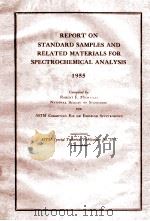
- REPORT ON STANDARD SAMPLES AND RELATED MATERIALS FOR SPECTROCHEMICAL ANALYSIS 1955
- 1956 AMERICAN SOCIETY FOR TESTING MATERIALS
-
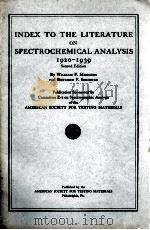
- INDEX TO THE LITERATURE ON SPECTROCHEMICAL ANALYSIS 1920-1939
- 1941 AMERICAN SOCIETY FOR TESTING MATERIALS
-
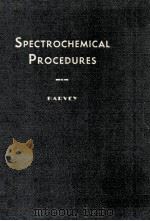
- SPECTROCHEMICAL PROCEDURES
- 1950 APPLIED RESEARCH LABORATORIES
-
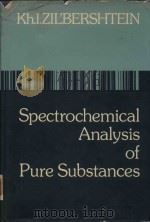
- SPECTROCHEMICAL ANALYSIS OF PURE SUBSTANCES
- 1977 ADAM HILGER LTD
-
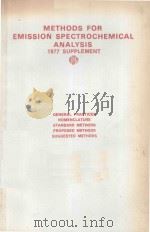
- METHODS FOR EMISSION SPECTROCHEMICAL ANALYSIS 1977 SUPPLEMENT
- 1977 AMERICAN SOCIETY FOR TESTING AND MATERIALS
提示:百度云已更名为百度网盘(百度盘),天翼云盘、微盘下载地址……暂未提供。➥ PDF文字可复制化或转WORD
